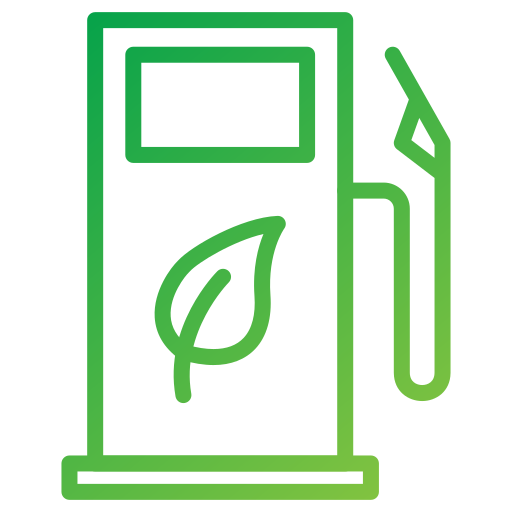Climate Change and Energy
Energy management is a crucial aspect of our Company’s sustainable practices, and we believe implementing energy-saving measures can have a significant impact on reducing power consumption and improving overall efficiency. We have been continuously thriving to achieve same through various energy saving interventions in its daily operations.
Focus Areas :
-
 Energy Efficiency
Energy Efficiency
-
 Energy Conservation
Energy Conservation
-
 Alternative Fuels
Alternative Fuels
Initiatives Taken :
- Biomass-based Energy Plant
- Outdoor lighting is equipped with timers to reduce power consumption
- The introduction of Dynasteam system has reduced Press belt power consumption
- Replacement with LED Lights
- Installation of external exhaust fans on VFD panels at energy plant
Case Study: Embracing Greener Architecture
Greenpanel’s Andhra Pradesh plant has been rated by the prestigious IGBC Green Factory Building with a Gold rating for their sustainable manufacturing practices as it derives steam energy from a biomass-based energy plant.The Company invested in energy conservation technologies :
- Passive solar control is enabled
- HVAC systems, insulations are taken proper care of.
- Light Emitting Diode (‘LED’) are replaced with Compact Fluorescent Lamps (‘CFLs’) lamps lighting to reduce energy consumption.
- Lux sensors are in place for electricity savings.
These initiatives helped us achieve energy savings of around 34% when compared with the Green Building baseline.
Case Study: Biomass Energy Plant
Greenpanel’s 100 MW biomass-based energy plant located at Rudrapur, Uttarakhand showcases our commitment to sustainability by utilizing process waste as fuel. This plant serves as the primary energy source for producing the heat and steam required in MDF manufacturing.
We are proud to disclose that we do not use any coal as an in-house energy source and our biomass-based energy is a sustainable alternative to traditional fossil fuels and significantly lessens CO2 emissions. By repurposing waste as fuel, we lower costs, reduce energy consumption, and support circular resource use, aligning with our vision for a greener future
Case Study: Offsetting Emissions through Carbon-Sequestration
Greenpanel’s commitment to combating climate change is exemplified through our extensive tree plantation efforts. As a part of our “Plantation Programme Initiative,” we planted 3,11,47,708 saplings during FY 2023-24, creating a thriving green cover around our plants. These trees act as carbon sinks, sequestering carbon dioxide and contributing significantly to our carbon neutrality goals.
Looking ahead, we plan to quantify the carbon offset achieved through these plantations in the upcoming reporting year. This evaluation will provide critical insights into the environmental impact of our efforts and shape future strategies for sustainability and climate action.
Preserving Air Emissions
Greenpanel is an environmentally conscious industry that operates within the permissible limits set by the State Pollution Control Board (SPCB) for air emissions. The company prioritizes non-polluting practices in its operations. Ensuring a healthy outdoor air quality in and around our operations has been of utmost importance to us.
Installed bag house filter and present stack
Key Initiatives Taken
- Testing of formalin catcher on MDF boards for reducing emission in final product is in place.
- Installation of Bag house filters for PM reduction.
- Utilizing pollution control devices like Electrostatic Precipitators (ESPs) or Bag Filters to effectively capture particulate matter generated during our operations
- Updated boiler management systems
Water Stewardship
Greenpanel recognizes water as an integral part of environmental as well as societal resource, which necessitates careful planning to assure that everyone gets their fair share. Water consumption, discharge and preservation is of prime importance to encourage an environmentally conscious business prospect as well as to abide by the regulations set by the governing bodies.
Key Initiatives Taken
- Rainwater harvesting pond capacity of 2,00,000 KL
- WTP RO reject water volume of approximately 2500KL is recycled to raw water tank to reduce raw water consumption
Water Saving Strategies
Water Usage Optimization
Reuse and Recycle water
Rainwater harvesting
100% ZLD status at Andhra plant
Waste Management
At Greenpanel, we have developed a comprehensive waste management system to ensure the efficient utilization and responsible disposal of by-products from our manufacturing processes. By adopting innovative methods, we repurpose materials such as side cuttings and dust as fuel for our boilers, achieving 100% utilization and reinforcing our commitment to sustainability.
Key Initiatives Taken
- Proper waste segregation and disposal of hazardous and non-hazardous waste, organic and non-organic waste, liquid waste, and solid waste.
- ETP sludge generated mainly consists of wood waste and chemical waste, which are subsequently used as a source of biomass-based fuel, and treated water is reused in the manufacturing process.
- The Company has established partnerships with brick manufacturers for the utilization of fly ash generated from the boilers in energy plant.
- All the waste generated from the processes are documented and disposed as per CPCB norms.
